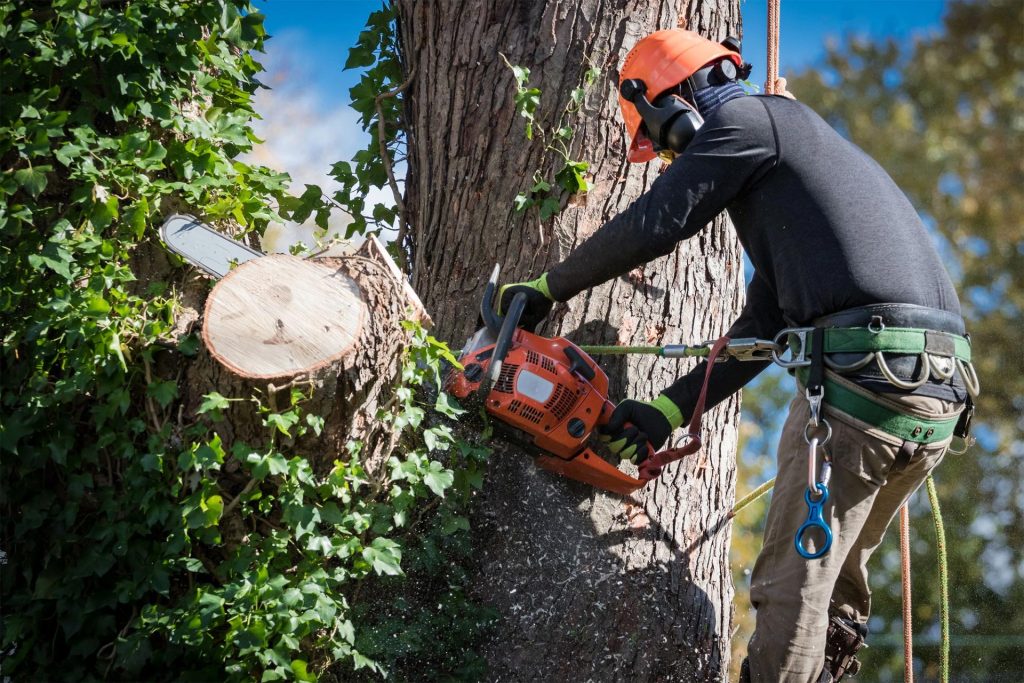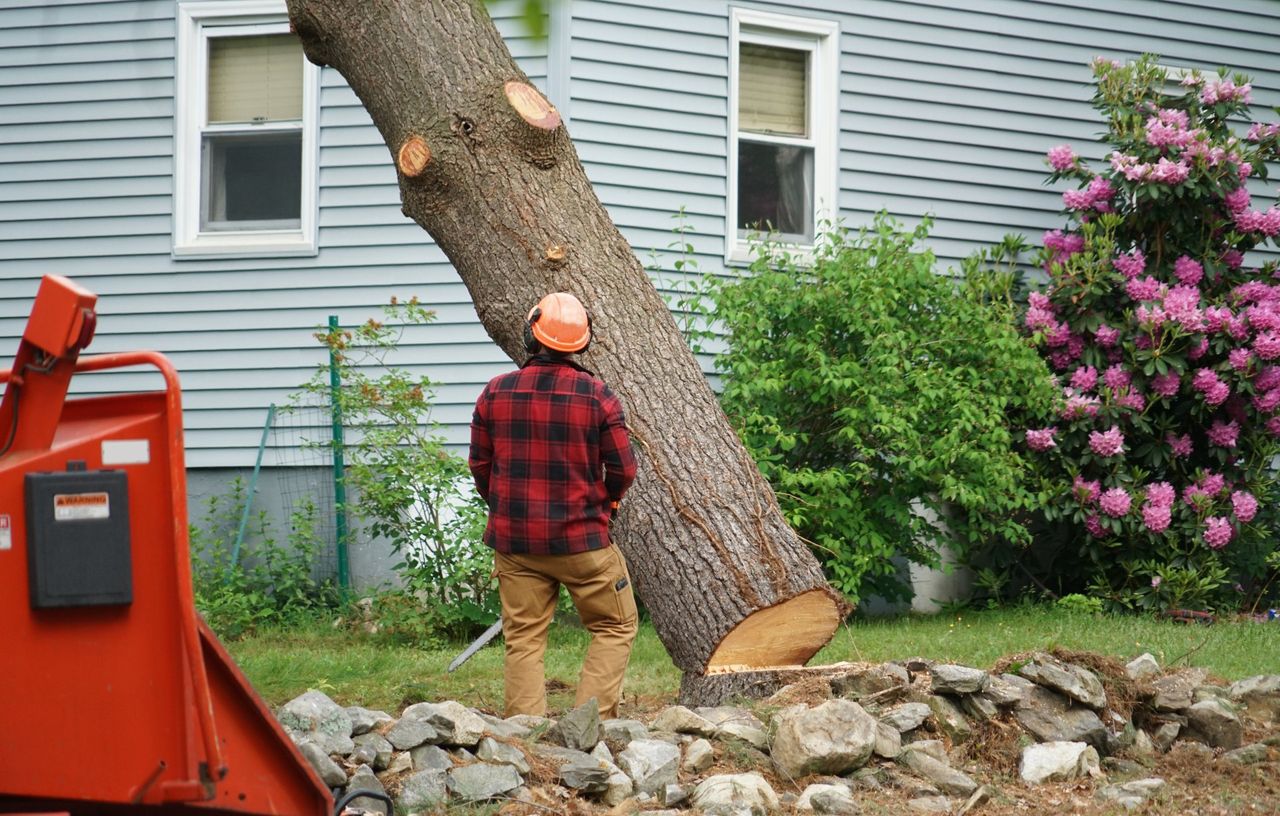In times of fallen trees or hazardous trees emergencies, swift action is crucial. Knowing the signs that indicate the need for emergency tree service can prevent property damage and ensure safety. Whether facing a severe storm aftermath or sudden tree instability, being aware of the ten key indicators is vital. Understanding these signals can help you act promptly and avoid potential hazards. Stay informed to protect your property, loved ones, and branches from unforeseen tree emergencies.
Trees Leaning on Structures
Assess Lean
Inspect the angle of lean of the tree, including the branch; anything over 20 degrees necessitates immediate attention and may require emergency intervention. A significant lean indicates potential instability and risk.
Evaluate the direction of the lean concerning nearby structures. Prioritize addressing trees leaning towards buildings or power lines to prevent accidents.
Signs of Damage
Look for signs of decay or damage, especially on the side where the tree is leaning. Decay weakens the tree’s structure, increasing the likelihood of falling.
Inspect the tree limbs and trunk for any cracks, splits, or holes. These indicate potential tree damage and structural weaknesses that can lead to sudden collapse.
Risk Evaluation
Consider potential risks posed by the leaning tree. Assess the proximity to structures, roads, or high-traffic areas for safety concerns.
Prioritize safety by addressing emergency trees that pose an immediate danger to people or property first. Quick action can prevent accidents and property damage.
Proximity to Power Lines
Identify Risks
Inspect your trees for any branches that are dangerously close to power lines to prevent an emergency. Trees touching electrical cables can pose serious risks, including fire hazards and power outages.
Be vigilant for signs of contact between tree branches and power infrastructure, such as sparks or flickering lights near the affected area in case of emergency.
Immediate Action
If you notice any branches in close proximity to power lines, it is crucial to act promptly. Contact emergency tree service professionals for expert advice on how to safely address the issue.
Avoid attempting to trim or remove branches near power lines yourself, as this can be extremely dangerous and should only be handled by trained experts.
Pros:
- Prompt action can prevent potential fire hazards and power outages.
- Professional assistance ensures the safety of both individuals and property.
Cons:
- Emergency tree services may come at a higher cost due to the immediate response required.
Fire Hazards
Trees touching power lines can lead to electricity passing through the tree, creating a significant risk of fire. This situation not only endangers your property but also poses a threat to surrounding structures and residents.
In cases where trees are leaning on or close to power lines, the risk of fire is heightened, making it essential to seek emergency assistance promptly.
Remember, when dealing with trees near power lines, safety should always be the top priority. Taking proactive steps to address potential risks can prevent catastrophic consequences.
Falling or Withering Branches
Monitor Trees
Inspect tree branches regularly to identify any signs of weakness or decay. Look for branches that are withering or have lost their leaves unexpectedly.
Keep an eye out for branches that fall without warning, as this could indicate structural instability in the tree. Such occurrences might signal underlying issues that need immediate attention.
Assess Tree Health
Consider the overall health of the tree if you notice frequent branch loss. Decay in the trunk or major branches can compromise the tree’s stability and increase the risk of falling branches.
If you observe a significant amount of branch loss over a short period, it could be a sign of poor tree health. Addressing these issues promptly can prevent further damage or accidents.
Urgent Removal
Prioritize the removal of branches that pose a threat to property or pedestrian safety. Falling branches can cause damage to homes, vehicles, or injure individuals passing by.
In cases where pruning is not sufficient to address the problem, consider removal as a necessary step to mitigate risks. Seek professional assistance to safely remove hazardous branches.
Cavities in Tree Trunks
Signs of Decay
Inspect tree trunks for cavities, which can signal extensive decay or weakness. Cavities are often a red flag for underlying structural issues within the tree.
Look out for dead bark around the cavities. This could indicate that the decay has spread further than what meets the eye.
Importance of Evaluation
If you notice cavities in your tree, it’s crucial to seek professional evaluation promptly. Tree care experts can assess the extent of the damage and recommend necessary actions.
Remember, cavities are not just superficial; they can compromise the overall health and stability of the tree.
Preventing Further Damage
Regular tree examination by a tree care expert can help catch issues like cavities early on. Prompt action can prevent accidents caused by falling branches or weakened trees.
Taking proactive steps based on professional advice can save your tree from irreversible harm.
Exposed Tree Roots
Uprooted Roots
Inspect your yard for uprooted tree roots, which can indicate instability and potential hazards. These roots may disrupt the soil, causing the tree to lean or fall.
Proximity to Structures
Check the proximity of exposed tree roots to buildings and walkways. Roots near structures can cause damage to foundations and pose risks to safety.
Professional Evaluation
Seek professional help to assess the health and stability of trees with exposed roots. Early detection of issues can prevent hazardous situations.

Fallen Tree Parts
Immediate Removal
Remove any fallen branches or limbs promptly to prevent accidents. These can pose serious safety hazards to people and property.
Act swiftly to prevent accidents and ensure the area is safe for everyone. Analyze the tree’s condition to determine the best course of action.
Structural Analysis
Analyze the tree’s structure to decide if pruning or complete removal is necessary. Look for signs of decay, cracks, or instability.
Inspect the tree for any structural damage that may compromise its stability. Addressing these issues promptly can prevent further damage.
Quick Action
Act quickly if fallen parts compromise the tree’s integrity or surrounding area. Immediate action is crucial to mitigate risks and ensure safety.
Taking prompt action can prevent potential accidents and further damage. Engage professional services for efficient emergency tree removal.
Mildew or Fungus on Trees
Inspecting for Dusty Mildew
Check the leaves and trunks of mature trees for signs of dusty mildew, a fungal infection common in humid conditions. Look for powdery white or gray spots, indicating potential trouble.
Look out for any unusual growths or discoloration on the tree’s surface, as these could be early signs of a pest infestation or disease. Take note of any changes in the tree’s appearance, such as wilting leaves or abnormal growth patterns.
Prompt Treatment Measures
If you spot mildew on your trees, act promptly to address the issue. Use appropriate insecticides or fungicides to treat the affected areas and prevent further spread. Ensure thorough coverage to target all infected parts effectively.
Consider consulting with a professional arborist to determine the best course of action for treating the mildew. They can provide expert guidance on selecting the right products and application methods for optimal results.
Emergency Removal Considerations
Despite your best efforts, if the mildew persists and spreads rapidly, it may be necessary to opt for emergency removal services. This step is crucial to prevent the infection from spreading to other plants in your garden or landscape.
When deciding on emergency removal, prioritize safety and efficiency. Choose a reputable tree service company with experience in handling urgent situations to ensure a swift and effective resolution.
Signs of Tree Disease
Leaf Discoloration
Look for unusual leaf discoloration such as yellowing, browning, or spotting, which can be signs of a diseased tree. Changes in leaf color may indicate underlying health issues that require immediate attention.
Abnormal Growth Patterns
Monitor abnormal growth patterns like stunted growth or excessive branching, which could be indicators of tree disease. These irregularities in growth may suggest the presence of pests or fungal infections affecting the tree’s health.
Pests and Fungi
Check for pests or fungi on the tree, as they are common indicators of diseased trees. Infestations by insects or the presence of fungal growth can weaken the tree’s immune system, making it more susceptible to diseases.
Arborist Consultation
Consult with an arborist if you notice multiple symptoms of tree disease, such as leaf discoloration, abnormal growth, or pest infestations. An arborist can provide expert advice on diagnosing the issue and recommend appropriate treatment options.
Hollow or Damaged Trunks
Identifying Structural Issues
Inspecting trees for hollow or damaged trunks is crucial in assessing their health. Hollow trunks can indicate internal decay, weakening the tree’s structural integrity. Look for signs such as cavities, cracks, or missing bark.
Evaluating Tree Health
Assess the extent of damage to determine the tree’s viability. Minor trunk damage can often be treated, but severe cases may require removal. Consider factors like the tree’s age, species, and overall condition.
Professional Consultation
If significant trunk damage is observed, seek immediate professional advice. Arborists can assess the tree’s health and recommend appropriate action. Prompt intervention can prevent safety hazards and save the tree if possible.
Closing Thoughts
After reviewing the signs indicating that you may need emergency tree service, it’s essential to prioritize your safety and property by addressing these issues promptly. Ignoring these warning signals could lead to severe consequences like property damage, injuries, or even fatalities. By taking action when you notice leaning trees, falling branches, or signs of disease, you can prevent potential disasters and ensure the health and longevity of your trees.
Don’t wait for a crisis to strike; be proactive in assessing and addressing any concerning signs in your trees. Regular inspections, timely maintenance, and seeking professional help when needed are key steps in safeguarding your property and loved ones. Remember, a small intervention today can save you from significant troubles tomorrow. Stay vigilant and take care of your trees to enjoy a safe and beautiful outdoor environment.
Ensure Safety with JC Tree Service’s Expert Emergency Tree Services
When unexpected tree emergencies arise at your home or business, JC Tree Service is ready to provide professional emergency tree services. Whether it’s storm-damaged trees threatening your property’s safety or fallen trees blocking access, our skilled team can handle it all. From urgent tree removal to immediate hazard mitigation, we are equipped to assist you in Brentwood, Antioch, and surrounding areas.
Understanding the importance of safety and rapid response, we focus on delivering superior tree care tailored to your emergency needs. Our emergency tree services are crucial not only for protecting your property but also for ensuring the safety of your family or employees. Prompt removal of hazardous trees prevents further damage, reduces safety risks, and restores peace of mind. With JC Tree Service, you can trust that your emergency tree situations are managed by experts, keeping your outdoor areas safe and secure.
Don’t let unexpected tree emergencies jeopardize your property’s safety. Contact JC Tree Service today to learn how our emergency tree services can address your urgent needs. We offer a free, no-obligation quote to help you get started. Experience the difference that professional tree care can make!
Disclaimer
The materials available on this website are for informational and entertainment purposes only and not to provide legal or professional advice. You should contact your attorney or home improvement specialist to obtain advice concerning any particular issue or problem. You should not act or refrain from acting based on any content included in this site without seeking legal or other professional advice. The information presented on this website may not reflect the most current home improvement developments. No action should be taken in reliance on the information on this website. We disclaim all liability concerning actions taken or not taken based on any or all of the contents of this site to the fullest extent permitted by law.


